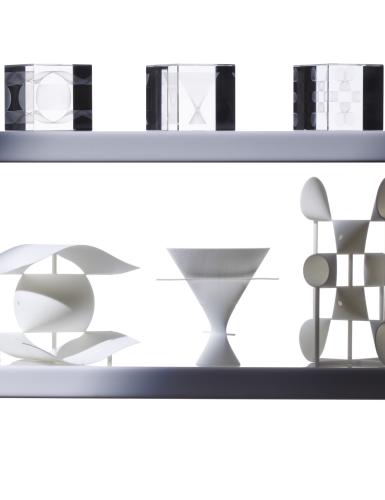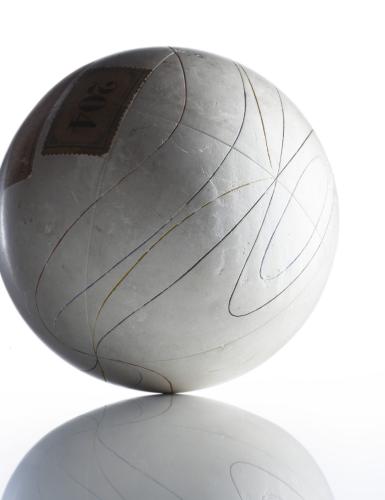Established in 1995, the Geometric Models Collection at the Institute of Mathematics began with a number of historic pieces, including models dating back to the 19th century.
Since then, the collection has been expanded in many directions, above all through new 3D models that were specifically made to order by the Institute. The collection now includes approximately 80 models, designed and produced by former institute employee Dr. Oliver Labs, most of which are modern 3D-printed versions of classic plaster models.
Thanks to modern methods, it is now possible to produce extremely thin-walled models that capture the precision of the abstract mathematical ideas in a way older techniques could not.
This new collection brings together significant objects from the following areas: Cubic surfaces, minimal surfaces, knot theory, areas of constant Gaussian curvature. Complementing these models are roughly 20 glass objects, intricately crafted through laser-in-glass technology. This process is especially well-suited for extremely fragile objects that would be too delicate to remain stable even as modern 3D-printed sculptures. Currently, this material mainly contains quartics with singularities, such as Plücker's equatorial surfaces and Fresnel's wave surface, but also a Boy's surface.
The objects from the collection are occasionally used in courses, especially in seminars. The acquisition of numerous other models of this type and also other objects important for teaching (such as historical mathematical instruments) is planned. The collection, which is primarily used in teaching, is constantly being expanded.


